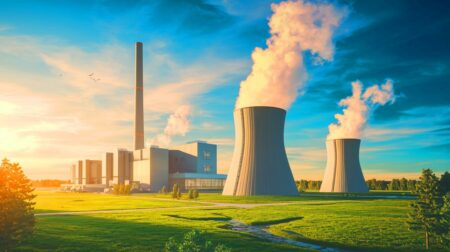Coal has been rightfully branded a dirty fuel source as burning it in large quantities drives climate change and pollutes the air. Yet soon it could help us with a clean energy transition by serving as storage for hydrogen to power transportation, electricity generation and manufacturing.
This is according to scientists at Penn State University in the United States who have been experimenting with storing hydrogen in coal mines and deposits.
“We found that coal can be this geological hydrogen battery,” explains Shimin Liu, an associate professor of energy and mineral engineering at Penn State. “You could inject and store the hydrogen energy and have it there when you need to use it.”
Hydrogen shows much promise as a clean energy source, but an affordable infrastructure for it, including a way to store it efficiently, remains some way off. Geologic formations could provide a solution because they can store large amounts of the gas for use in power generation, according to the scientists.
“Coal is well-studied and we have been commercially producing gas from coal for almost a half century,” Liu says. “We understand it. We have the infrastructure. I think coal would be the logical place to do geological hydrogen storage.”
The scientists analyzed eight types of coals from coal fields across the United States to better understand their sorption and diffusion potential as well as storage capacity. “All eight coals showed considerable sorption properties, with low-volatile bituminous coal from eastern Virgina and anthracite coal from eastern Pennsylvania performing the best in tests,” the scientists report in a study.
“I think it’s highly possible that coal could be the very top selection for geological storage from a scientific perspective,” Liu says. “We find that coal outperforms other formations because it can hold more, it has existing infrastructure and is widely available across the country and near populated areas.”
Depleted coalbed methane reservoirs may be the most suitable for hydrogen storage as their seams contain natural gases like methane and have become an important source of fossil fuel energy over the last several decades. The methane sticks to the surface of the coal in a process called adsorption.
Anthracite and semi-anthracite coals are especially good candidates for hydrogen storage in depleted coal seams and low-volatile bituminous coal are better candidates for gassy coal seams, according to the researchers. Injecting hydrogen into coal in these geological formation would cause the gas to stick to it. “These formations often have a layer of shale or mudstone on top that act as a seal keeping methane, or in this case hydrogen, sealed until it is needed and pumped back out,” the scientists say.
“A lot of people define coal as a rock, but it’s really a polymer,” Liu explains. “It has high carbon content with a lot of small pores that can store much more gas. So coal is like a sponge that can hold many more hydrogen molecules compared to other non-carbon materials.”
Coal has a weaker affinity with hydrogen compared to other sorbing gases like methane and carbon dioxide so the scientists designed new equipment for the task though a complicated process.
“We did a very novel and challenging design,” Liu saiys. “It took years to figure out how to do this properly. We had to properly design an experiment system, trial and error based on our previous experience with coals and shales.”
An added benefit of this technology to store hydrogen in coal mining communities could create new economic opportunities for them during the transition to renewables.
“In the energy transition, it’s really coal communities that have been the most impacted economically. This is certainly an opportunity to repurpose the coal region. They already have the expertise [such as engineering skills]. If we can build an infrastructure and change their economic opportunities, I think that’s something we should consider.”
Did you like it? 4.4/5 (29)








